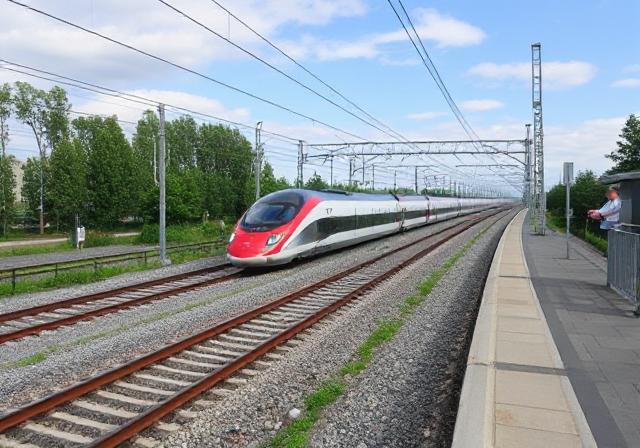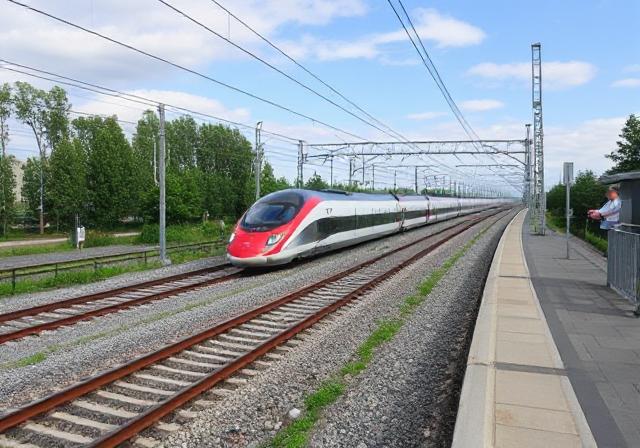Home » European Travel News » EU’s Bold High-Speed Rail Vision Faces Major Hurdles: Can Europe Overcome Challenges To Achieve Its 2030 And 2050 Goals, You Need To Know
Sunday, July 20, 2025

The European Union (EU) has set lofty targets for its rail network so that the number of high-speed rail services doubles by 2030 and triples by 2050. The goal is to bring faster, greener and more connected trips throughout the continent, for better mobility and less carbon emission in the transport sector. Despite the clarity of vision, the challenges of combining Europe’s disjointed rail systems leave huge barriers to a goal of a unified high-speed rail.
What Is Expected from the EU High-Speed Rail Network?
In Europe, high-speed rail systems are governed by distinct technical and operational criteria established by the EU and global bodies such as the International Union of Railways (UIC). To meet these criteria, rail systems must ensure high-speed travel with advanced infrastructure designed for efficient and sustainable transportation.
Speed Requirements:
Minimum Speed Requirement: High-speed rail lines are engineered to achieve speeds of no less than 250 km/h (155 mph) on exclusive tracks designed specifically for high-speed travel. Some routes, such as France’s TGV and Spain’s AVE, achieve speeds up to 300–350 km/h.
- Upgraded Lines: Existing rail lines, when upgraded for high-speed use, must support speeds of at least 200 km/h (124 mph), but these are considered “high-speed compatible” rather than true high-speed lines.
Infrastructure:
- Dedicated Tracks: High-speed rail lines are purpose-built with continuous welded rails, gentle curves, and minimal gradients to ensure safe and smooth travel at high speeds. Notable examples are France’s LGV (Ligne à Grande Vitesse) and the ICE routes in Germany.
- Electrification: Most high-speed lines use standardized electrification systems (e.g., 25 kV AC or 15 kV AC), but variations across countries (such as 3 kV DC in Italy) present interoperability challenges.
- Signaling Systems: The European Rail Traffic Management System (ERTMS) is increasingly being adopted for cross-border operations, with the higher-level ETCS Level 2 ensuring enhanced safety and coordination.
Rolling Stock:
High-speed trains like France’s TGV, Germany’s ICE, and Italy’s Frecciarossa are designed for high performance, featuring aerodynamic designs, advanced braking systems, and compatibility with the ERTMS. These trains must meet EU interoperability standards to operate seamlessly across borders, addressing issues such as varying track gauges and signaling systems.
Operational Characteristics:
High-speed rail services are focused on intercity and international routes, significantly reducing travel times and providing an environmentally friendly alternative to air travel, especially for distances of 300–800 km. The aim is to integrate these services with conventional rail and urban transport systems, although national priorities may limit regional integration.
The EU’s Sustainable and Smart Mobility Strategy (2020) outlines plans to:
- Expand High-Speed Networks: Spain, for example, has the largest high-speed network in Europe, with over 3,600 km of dedicated track.
- Improve Cross-Border Connectivity: New routes like Berlin-Amsterdam and Paris-Brussels are being enhanced to provide seamless travel between neighboring countries.
- Promote Key Projects: Initiatives such as Rail Baltica (connecting the Baltic states to Western Europe) and trans-Alpine tunnels (e.g., Lyon-Turin, Brenner Base Tunnel) are key parts of the vision.
Despite the ambitious goals, the reality remains complex, as the gap between vision and implementation is significant. The EU’s dream of a seamless high-speed rail network faces several hurdles that could hinder its success.
Challenges in Achieving High-Speed Rail Goals
While progress has been made, harmonizing Europe’s rail networks is a challenging task. Key issues that threaten to derail the EU’s ambitious goals include:
Infrastructure Gaps:
Many EU countries are still working with outdated rail systems. These include varying track gauges, differing signaling systems, and inconsistent electrification standards, all of which create barriers to creating a unified high-speed network. Upgrading these systems requires significant time and investment, with some regions lagging behind in development.
Investment Shortfalls:
Funding for high-speed rail projects varies widely across EU member states. Wealthier nations like Germany and France have well-established networks, but other countries, particularly in Eastern Europe, face budget constraints that hinder infrastructure development. EU funds like the Connecting Europe Facility help, but demand often exceeds supply, delaying projects.
Political and Bureaucratic Resistance:
National governments often prioritize domestic networks over cross-border integration, and vested interests within national rail operators complicate coordination. Political interests and bureaucratic obstacles can significantly impede the advancement of crucial projects, as demonstrated by the prolonged delays in the Turin-Lyon high-speed rail connection.
Technical and Environmental Hurdles:
Environmental concerns and local opposition often delay or disrupt major infrastructure projects. The Lyon-Turin tunnel, for example, has faced continuous opposition from environmental groups, delaying its completion. These types of setbacks significantly impact the timelines and costs of ambitious high-speed rail projects.
Slow Progress on Key Projects:
While some new cross-border routes, such as the Berlin-Amsterdam and Paris-Brussels links, were enhanced in 2025, projects like Rail Baltica are far behind schedule and over budget. This delay in critical infrastructure further underscores the challenges of meeting the EU’s long-term rail objectives.
Common Problems Across Europe’s Rail Systems
The EU’s vision for high-speed rail faces many common issues that plague national rail systems. These problems hinder efficiency and contribute to the fragmentation of Europe’s rail network.
Technical Incompatibilities: Differences in track gauge, electrification standards, and signaling systems cause delays and increase the cost of cross-border services.
High Costs: High-speed rail is often more expensive than air travel, especially on international routes. The costs associated with upgrading and maintaining rail infrastructure contribute to higher ticket prices.
Disruptions: Strikes, maintenance issues, and aging infrastructure cause frequent delays and operational disruptions. Countries like Italy, Finland, and Sweden experience more disruptions due to these ongoing challenges.
Underinvestment: Countries in Eastern Europe, such as Bulgaria and Romania, suffer from outdated infrastructure and lack of funding for modern rail networks, which reduces the overall reliability and efficiency of the rail systems.
National Prioritization: Many countries focus on domestic rail networks, limiting the integration of international services. France, for example, has a Paris-centric high-speed network that prioritizes domestic routes over international connections.
Low Freight Share: Rail freight in Europe accounts for only 18% of total cargo transport, much lower than in the US (38%). This reliance on road and maritime transport limits rail’s potential for long-distance freight movement.
Moving Forward: The Path to a Unified High-Speed Rail Network
The European Union’s ambitious high-speed rail goals face an uphill battle due to a myriad of technical, financial, and political challenges. The EU must prioritize addressing these challenges to bring its vision of a seamless, efficient, and sustainable high-speed rail network across Europe to life.
Key steps that need to be taken include:
Investment Priority: Major investment in rail infrastructure is essential. We need to invest in both high-speed and classic rail systems to bring them more up to date and to establish a coherent railway network across the continent.
Making Infrastructure Uniform – The EU needs to push interoperability, unifying track gauges, electrification solutions and signaling systems in member states. A common infrastructure will simplify the processing yet further, cutting down costs and improving efficiency.
Promote cooperation Member States need to cooperate to link national agendas to pan-European objectives and prioritise cross-border services.
Tackling Environmental and Political Factors: Environmental impacts need to be taken into account with the acceptable level of political resistance to avoid key infrastructure developments being set back.
If the EU is to reach its ambitious high speed rail goals, it will take a collective effort from all member states, significant investment, and a steel determination to tackle the technical, political, and financial concerns that currently plague its validity. Without such actions, the dream will remain a dream: a seamless, continent-wide high-speed rail network.

